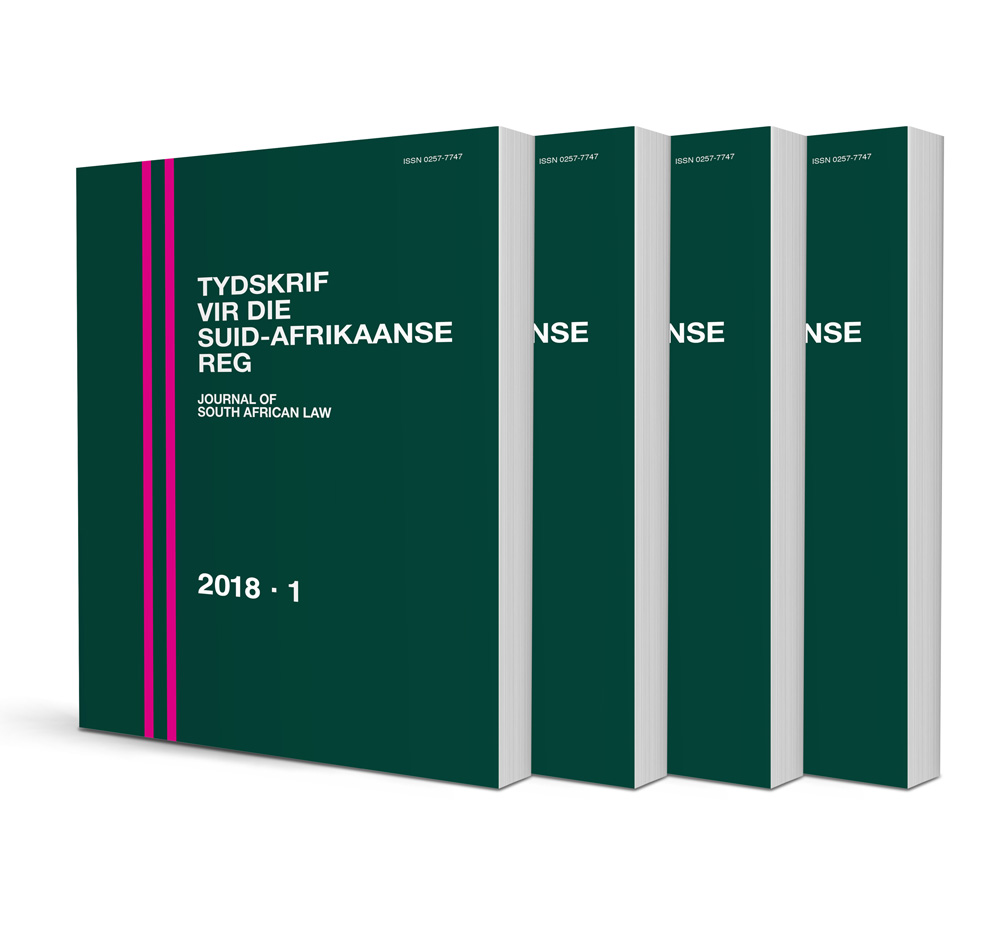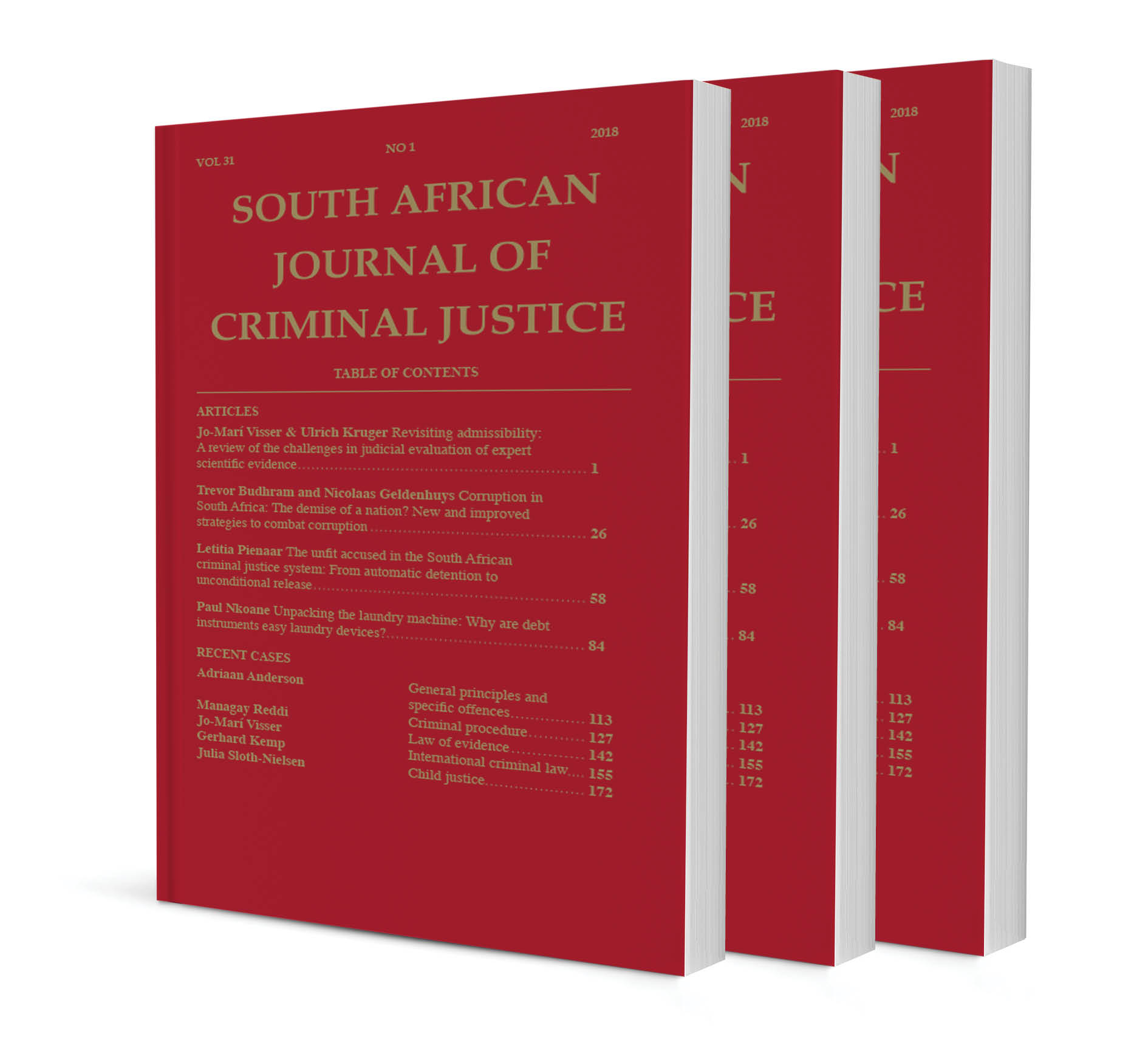Regspraak: The unilateral termination by a bank of the bank–client agreement between it and its client

Regspraak: The unilateral termination by a bank of the bank–client agreement between it and its client
Authors: WG Schulze and SIEG Eiselen
ISSN: 1996-2207
Affiliations: University of South Africa
Source: Tydskrif vir die Suid-Afrikaanse Reg, Issue 4, 2022, p. 828-838
https://doi.org/10.47348/TSAR/2022/i4a12
Abstract
Die reg van ’n bank om die bank-kliënt ooreenkoms eensydig te beëindig, is tans een van die brandpunte in die Suid-Afrikaanse bankreg. Die vernaamste gesag in hierdie verband is die beslissing in Bredenkamp v Standard Bank of South Africa Ltd (2010 4 SA 468 (HHA)). In ’n onlangse beslissing van die Wes-Kaapse hooggeregshof in Survé v Nedbank Limited ((698/2022) 2022 ZAWCHC 19 (14 Febr 2022)), het die hof in ’n aantal obiter-opmerkings moontlik onsekerheid gesaai oor die algemene geldigheid van die beginsels soos uiteengesit in die Bredenkamp-saak. Hierdie bespreking ondersoek die geldigheid van hierdie obiter-opmerkings. In die loop van die bespreking word eerstens die algemene beginsels van die kontraktereg ten opsigte van die beëindiging van langtermynkontrakte bespreek. Daar word verduidelik dat ’n party ’n langtermynkontrak op drie moontlike wyses kan beëindig, naamlik (a) ooreenkomstig die bepalings van die kontrak, (b) op grond van wesenlike kontrakbreuk, en (c) laastens, by gebrek aan ’n kontraktuele bepaling, met redelike kennisgewing. Dit is slegs by hoogste uitsondering dat ’n kontrak geag sal word om vir ewig voort te duur. Daarna volg ’n bespreking van die toepassing van hierdie beginsels in die sfeer van die bankreg. ’n Aantal toonaangewende Suid-Afrikaanse beslissings word krities ondersoek ten einde die korrektheid van die obiter-opmerkings in die Survé-saak te beoordeel. Daar word in diepte ingegaan op die Bredenkamp-saak asook die beslissing in Barkhuizen v Napier (2007 5 SA 323 (KH)). Daarin het die howe bevestig dat redelikheid of billikheid nie losstaande vereistes van die kontraktereg is nie, maar dat dit slegs as aspekte van openbare belang in ag geneem moet word. Daar word ook verwys na die bepalings van die Suid-Afrikaanse Gedragskode vir Banke wat uitdruklik vereis dat ’n bank redelike kennis moet gee van die beëindiging van die bank-kliënt ooreenkoms. Die hof het in die Bredenkamp-saak bevestig dat redelike kennis in alle gevalle vereis word waar kontrakbreuk nie ter sprake is nie. Daar word ook regsvergelykend gekyk na die posisie in die Duitse reg. Uit die regsvergelykende ondersoek is dit duidelik dat die beginsels wat in die Duitse en Europese reg toegepas word in ooreenstemming is met die benadering van die hof in die Bredenkamp-saak. Laastens word aangetoon dat die opmerkings in die Survé-saak ongegronde twyfel op die Bredenkamp-saak werp omdat daar te veel klem gelê is op die kwessie van redelikheid en billikheid.
